The coastal mangrove forests of Kim Son district ( Ninh Binh province) play an important role in preserving the ecosystem and are considered a "green wall" that helps reduce the impact of natural disasters on people in this area.
"Every year, the coastal communes of Kim Son district are always affected by climate change such as: rising sea levels, saltwater intrusion, floods, reduced aquatic production... Therefore, the regeneration and development of mangrove forests is to build a "green wall" to protect the villagers. In fact, for many years, people living around the area have felt that mangrove forests help regulate the climate, protect the coastal landscape, prevent erosion, limit storms, protect coastal dykes... In particular, mangrove forests contribute to cleaning the environment, maintaining ecological balance for flooded areas, and minimizing marine pollution", said Mr. Tran Anh Khiem - Vice Chairman of the People's Committee of Kim Son district (Ninh Binh province).Ninh Binh is a locality with a coastline of about 15 km, located entirely in the area of 4 communes of Kim Trung, Kim Hai, Kim Dong, Kim Tan of Kim Son district. Because it is located in the Gulf of Tonkin and adjacent to the Day River, the sea area of Ninh Binh is often affected by extreme climate phenomena such as storms, heavy rains, floods, rising sea levels, saltwater intrusion, etc. This has significantly affected people's lives and the development of the local marine economy .
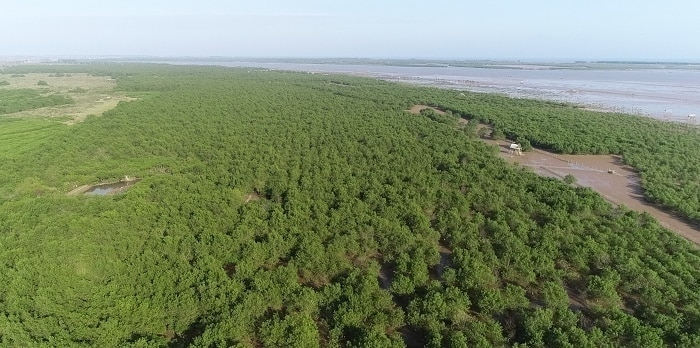
Kim Son coastal mangrove forest (Photo: Ninh Binh Radio and Television Station)
In order to overcome the above limitations, recently, Ninh Binh province has coordinated with the Ministry of Agriculture and Rural Development and many domestic and international organizations to plant hundreds of hectares of mangrove forests.
Now, along the sea dikes, from the barren tidal flats, the coastal area of Kim Son district, Ninh Binh province has been covered with a vast green color of mangrove, barringtonia, and sonneratia forests... growing well, reaching out to the sea. The coastal mangrove forest of Kim Son district has an area of over 614 hectares, which is the habitat of mangrove, barringtonia, and sonneratia trees. This is the "green lung" that "mother nature" has bestowed upon this land. In many places, the trees have grown to 3 - 5 m tall, with large bases forming large root systems that hold the soil, preventing erosion and erosion very effectively.
“Over the years, people living around the area have felt that mangrove forests help regulate the climate, protect coastal landscapes, prevent erosion, limit storms, protect coastal dykes... In particular, mangrove forests contribute to cleaning the environment, maintaining ecological balance for flooded areas, and minimizing marine pollution,” said Mr. Tran Anh Khiem - Vice Chairman of Kim Son District People's Committee (Ninh Binh Province).
The mangrove forests that have formed not only create a solid "wall" in front of the sea but also create an abundant source of aquatic life right under the forest canopy. Shrimp, fish, crabs, clams... have a place to live and reproduce, thereby helping people, especially those without boats to go to sea, to go into the forest every day to earn a living, creating a significant source of income for their families.
In addition, when the season of the king apple and the parrot flowers bloom, the beekeeping profession in Kim Son also develops, helping many beekeeping households earn tens of millions of dong each season.
It is estimated that the forest is home to hundreds of bird species, including many migratory species and many rare species listed in the Red Book. With its diverse and rich natural habitats, the Kim Son - Con Noi mangrove forest is recognized by UNESCO as a world biosphere reserve.
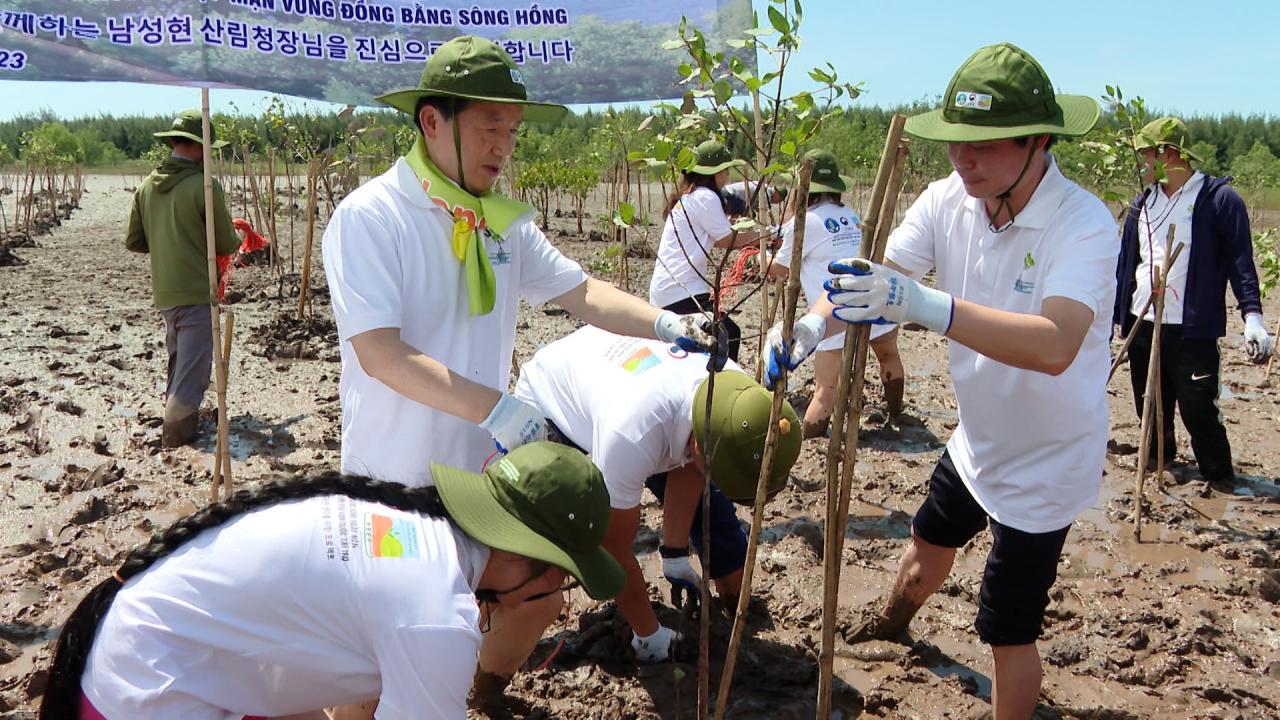
Planting trees and afforestation (Photo: Ninh Binh Radio and Television Station)
To protect the increasingly lush mangrove forests in the coastal communes of Kim Son district, organizations and Border Guard forces have proactively mobilized households to dredge and clean the environment, and remove barnacles attached to tree trunks. At the same time, local authorities have gone door-to-door to educate people about the role of forests, as well as how to properly exploit them to protect forest resources for long-term sustainability.
The Ministry of Agriculture and Rural Development in coordination with Ninh Binh province has carried out afforestation within the framework of the Project on Restoration and Sustainable Management of Mangrove Forests in the Red River Delta (abbreviated as the KFS Project). The project is funded by the Korean Government through the Korea Forest Service with a funding amount of 4.392 million USD. The project aims to plant 250 hectares of new mangrove forests; restore/supplement mangrove forests on 80 hectares. In addition, it will establish a mangrove nursery in Kim Son district (Ninh Binh province); support the development of sustainable forest management plans and ecotourism development; support livelihood development; support forest protection equipment; capacity building training, communication and study tours; research and development.
Mr. Nam Sunghyun - Minister of the Korean Forestry Agency - emphasized: "Forests are the optimal natural solution to address climate change, in which mangrove forests are of great value due to their large carbon absorption capacity, natural disaster prevention and the production of many marine species. Through tree planting activities in Kim Son mangrove forest, we will contribute to the success of development cooperation between the two governments of Vietnam and Korea".
Khoi Nguyen


![[Photo] Scientific workshop "Building a socialist model associated with socialist people in Hai Phong city in the period of 2025-2030 and the following years"](https://vphoto.vietnam.vn/thumb/1200x675/vietnam/resource/IMAGE/2025/5/21/5098e06c813243b1bf5670f9dc20ad0a)
![[Photo] Prime Minister Pham Minh Chinh attends the groundbreaking ceremony of Trump International Hung Yen Project](https://vphoto.vietnam.vn/thumb/1200x675/vietnam/resource/IMAGE/2025/5/21/ca84b87a74da4cddb2992a86966284cf)
![[Photo] Determining the pairs in the team semi-finals of the National Table Tennis Championship of Nhan Dan Newspaper](https://vphoto.vietnam.vn/thumb/1200x675/vietnam/resource/IMAGE/2025/5/21/eacbf7ae6a59497e9ae5da8e63d227bf)


![[Photo] Prime Minister Pham Minh Chinh receives Rabbi Yoav Ben Tzur, Israeli Minister of Labor](https://vphoto.vietnam.vn/thumb/1200x675/vietnam/resource/IMAGE/2025/5/21/511bf6664512413ca5a275cbf3fb2f65)




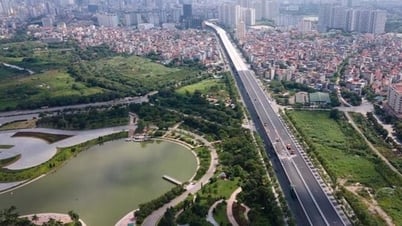
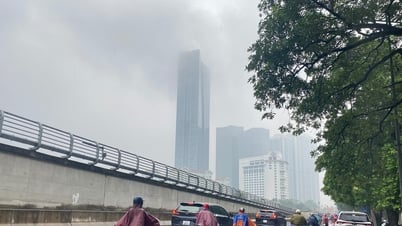









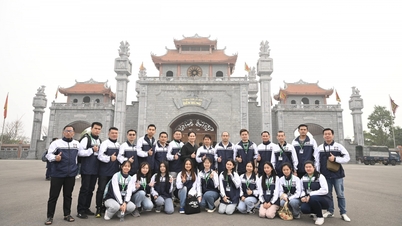


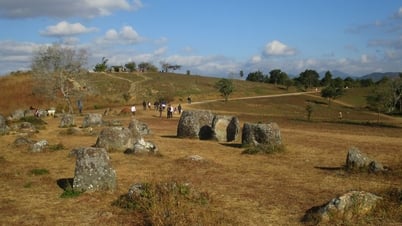
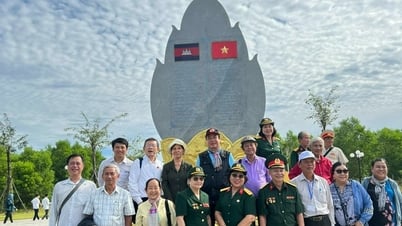
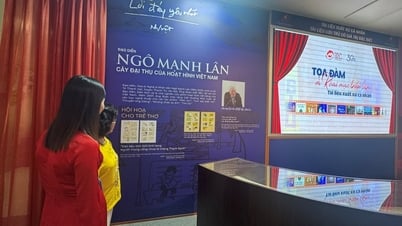






























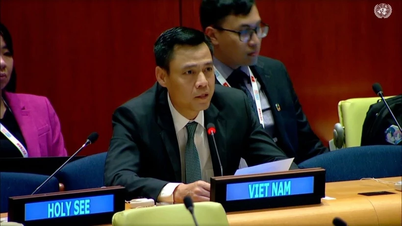








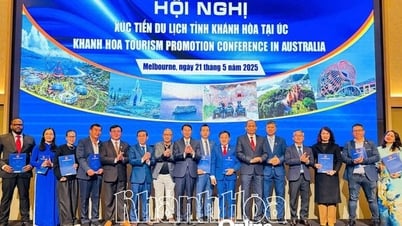
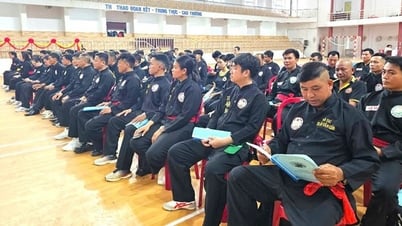



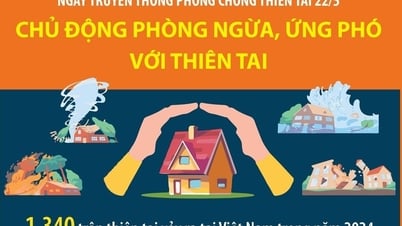




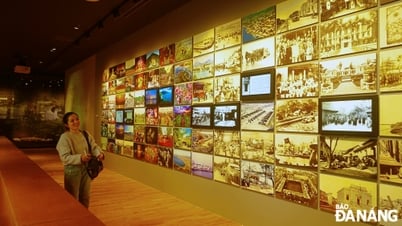
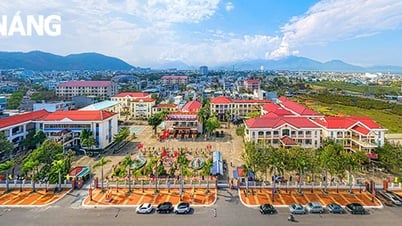
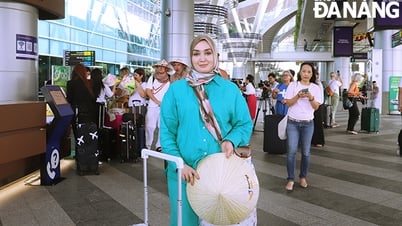










Comment (0)